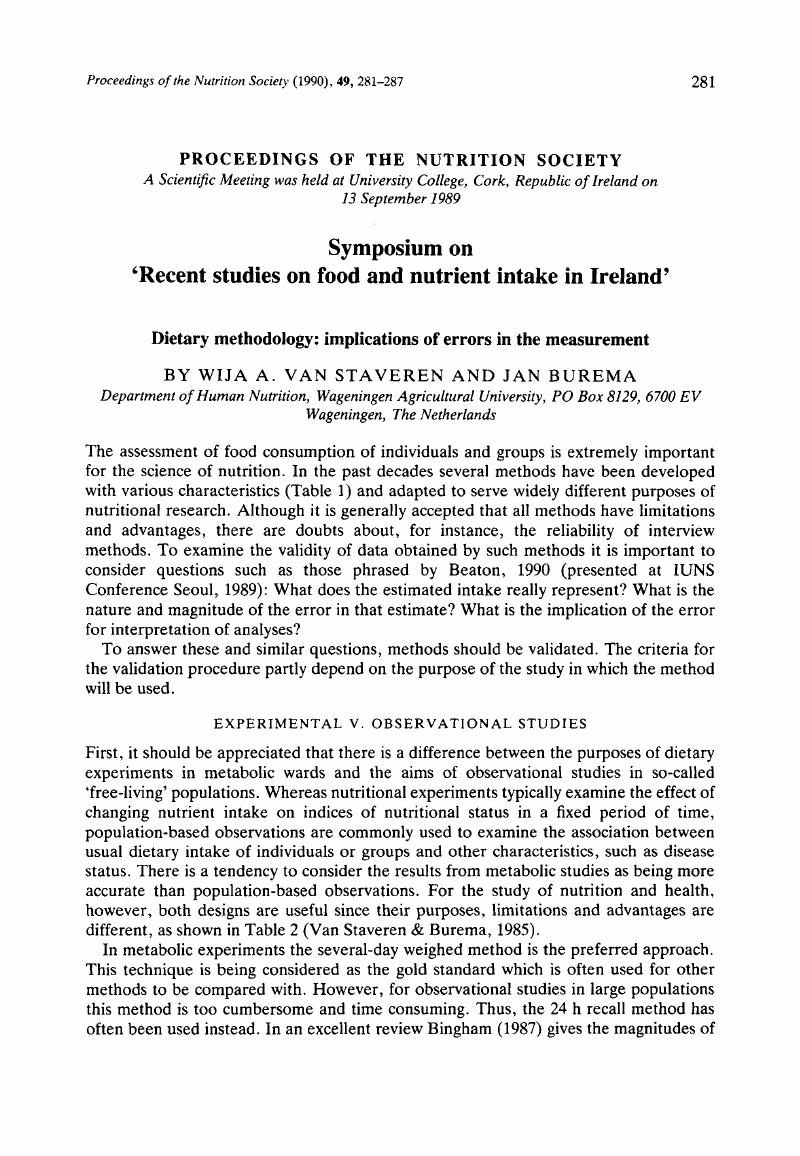Crossref Citations
This article has been cited by the following publications. This list is generated based on data provided by Crossref.
Bandini, Linda G
Dietz, William H
and
Schoeller, Dale A
1991.
Reply to LCPGM de Groot et al.
The American Journal of Clinical Nutrition,
Vol. 53,
Issue. 6,
p.
1504.
de Groot, Lisette CPGM
van Staveren, Wija A
and
de Boer, Janna O
1991.
Comparison of self-reported energy intake with energy expenditure.
The American Journal of Clinical Nutrition,
Vol. 53,
Issue. 6,
p.
1504.
Feunekes, GI
Van Staveren, WA
De Vries, JH
Burema, J
and
Hautvast, JG
1993.
Relative and biomarker-based validity of a food-frequency questionnaire estimating intake of fats and cholesterol.
The American Journal of Clinical Nutrition,
Vol. 58,
Issue. 4,
p.
489.
Deurenberg‐Yap, Mabel
Li, Teresa
Tan, Wei Ling
Staveren, Wija A van
and
Deurenberg, Paul
2000.
Validation of a semiquantitative food frequency questionnaire for estimation of intakes of energy, fats and cholesterol among Singaporeans.
Asia Pacific Journal of Clinical Nutrition,
Vol. 9,
Issue. 4,
p.
282.
Kaaks, Rudolf
Ferrari, Pietro
Ciampi, Antonio
Plummer, Martyn
and
Riboli, Elio
2002.
Uses and limitations of statistical accounting for random error correlations, in the validation of dietary questionnaire assessments.
Public Health Nutrition,
Vol. 5,
Issue. 6a,
p.
969.



